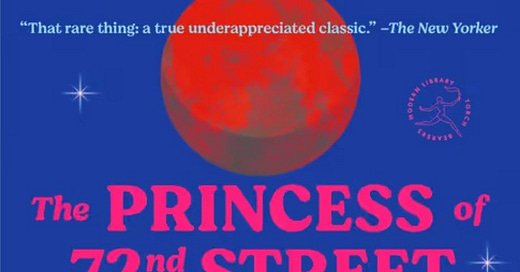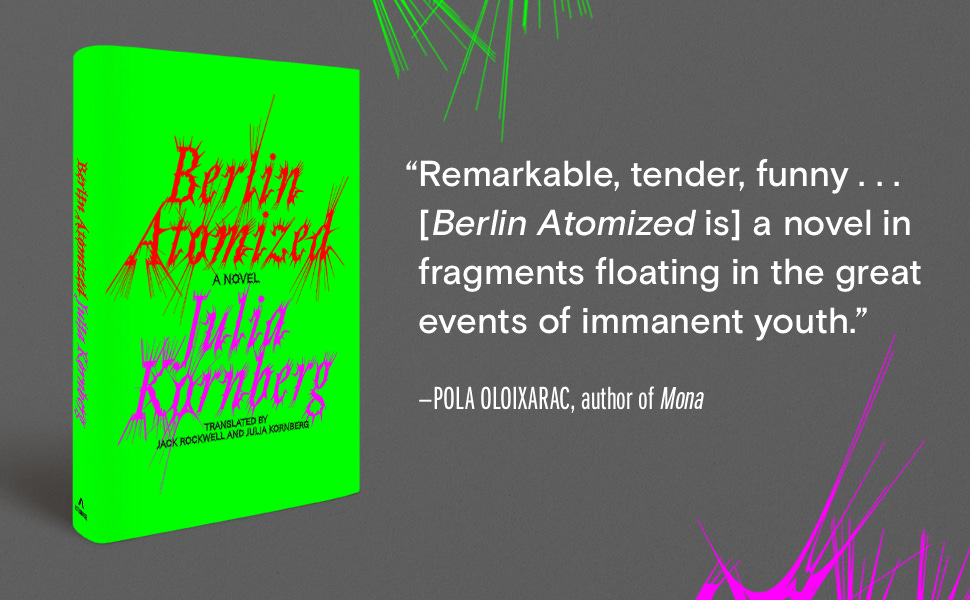In THE PRINCESS OF 72ND STREET by Eliane Kraf, a bi-polar artist wanders her realm – the upper west side of Manhattan, during the late 70s, a violent, economically depressed period in the big apple. During her manic phases, which Ellen numbers and calls the “radiance” she becomes Princess Esmeralda, liberated from a conventional and repressive way of life, and engaging in quirky, often dysfunctional relationships.
My eyes can pierce right through to the heart of a problem and reduce the offenders or would-be offender to bewildered passivity. The fist unclenches and the gun drops to the floor. Arrogance is very dangerous in my kingdom. But I project a special dignity which no one would care to defile or tamper with.
During the radiances, which include intimate memories and reflection on her unique personal history, every one of her senses are stimulated and, in truth, despite self-destructive behavior, she experiences life well beyond the so-called normal or stable drudgery of others. The novel, the last written by this once renowned writer/artist, offers an important glimpse into what is or is not mental illness, as well as an often devastating sense of longing. In 137 pages of exquisite prose and insight, and frequent humor, Kraf invites readers to contemplate the line between solitude and isolation, and the constant quest for human connection.
Before George, my academics were art historians who are very neat and have problems with sex. Then I tried the sciences such as physics, chemistry, and mathematics. These cannot converse. They are not impotent but clumsy and inept and need to bathe more often and consult a periodontist. In general scientists are boring and cannot convey excitement about anything. In addition, they are usually tall and too thin except for certain mathematicians who think of nothing but mathematics and eating. But I did not give up – I tried the philosophers. The philosophers were all stark raving mad, all in analysis which wasn’t helping, and had the most peculiar sexual fetishes and fantasies.
ON THE CALCULATION OF VOLUME [Volume 1 of 7] by Solvej Balle, translated from the Danish by Barbara Haveland, a rare books dealer finds herself trapped indefinitely on one November date. A profound philosophical variation on Ground Hog Day. Every sensory detail of every day becomes more meaningful. Her vision of the world prismatic. Her time with her husband all the more intimate. And yet, she’s a prisoner to the calendar, with no end in sight.
[Note: there are seven volumes, I’m just beginning Volume 2!]
That in this unfathomable vastness, these infinitesimal elements are still able to hold themselves together. That we manage to stay afloat. That we exist at all. That each of us has come into being as only one of untold possibilities. The unthinkable is something we carry with us always.
Tara knows what’s happening without knowing why, and her husband is befuddled, but willing to embrace the possibilities. Over time, however, how will he be liberated to move forward and how will she find her way back to him, to so-called reality and to a shared future?
Or maybe we were shipwrecked sailors. Washed up on an unknown shore, surprised and bewildered by our unexpected rescue, astonished to be alive, but with no knowledge of what might await us when we set out to explore the shoreline.
Told as a series of snippets of descriptive prose and existential contemplation, volume I [just 160 pages] is a stunning examination of the space-time continuum as well as an alternate contemplation of what it means to be human.
BERLIN ATOMIZED, a debut by Julia Kornberg, co-translated from the Argentine with Jack Rockwell, is another compact narrative examination of the space-time continuum, a speculative fiction focused on three siblings as they are catapulted between world capitals and forward in time to 2035, shadowed by the expectation of an apocalypse.
While we listened, I would kneel down and draw her story out like a comic book while Angelica recited its dialogues to me from above. We painted the girl with deep colors and put glitter on her body. At some point during those days, between the fourth and fifth track of that record, I felt something like the loneliness being scrubbed from inside me.
Emotionally and physically abandoned by their Jewish parents, the family comes apart as each of the three siblings attempts to establish a unique identity, facing one catastrophe after another, from minor to cataclysmic. The world they have known is ending. The world they’ve endured is unendurable. Whether their Jewishness is metaphor or parable, the connection to the hundred years earlier [1934] when anti-semitism rose to warfare in Europe, suggests a conflict that cannot be ignored.
Drones flew overhead. We didn’t know what was happening, if our friends were still alive. Paris suddenly felt like a battlefield – the war that had only been in our heads was not out on the streets. Hundreds of people called out for an answer. Their voices echoed as if in a canon…
Told in short tightly focused chapters, the novel is atomized, in effect, into digestible morsels, and in this way, the despairing nature of it all the more absorbable. A remarkable first novel with much to consider, past, present and future.
Cheers to short fiction with a long powerful punch.






